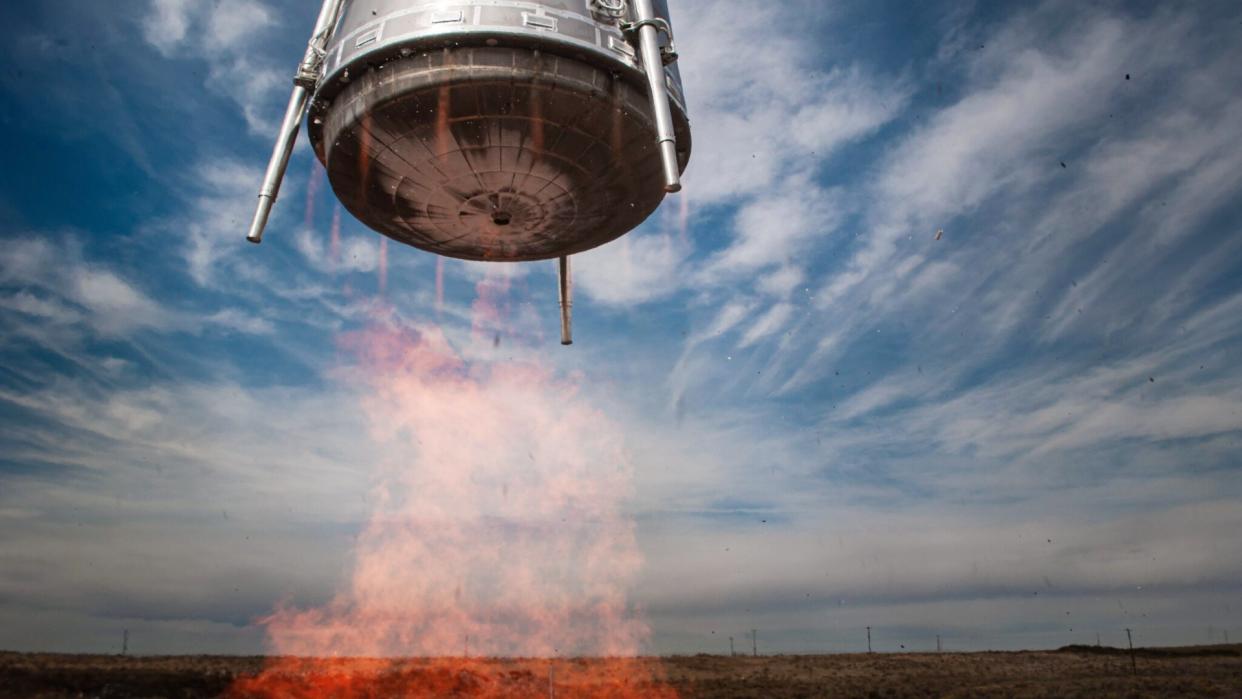Stoke Space gets closer to 100% reusable rocket with successful 'Hopper' test flight (video)

Stoke Space successfully landed its reusable second stage rocket system this week, an important demonstration of the company's innovative engineering concepts.
The test, dubbed Hopper2, saw Stoke Space's Hopper launch vehicle lift off about 30 feet off the ground and safely return to the ground, landing in its targeted landing zone after flying for about 15 seconds. The test was meant to demonstrate the soundness of several of the rocket's systems and design elements, including its hydrogen/oxygen engine, coolant-based heat shield and a propulsion system that maneuvers the rocket by throttling its different engines.
Stoke Space is confident that the successful test moves the company towards its goal of developing fully-reusable rockets. "We've also proven that our novel approach to robust and rapidly reusable space vehicles is technically sound, and we've obtained an incredible amount of data that will enable us to confidently evolve the vehicle design from a technology demonstrator to a reliable reusable space vehicle," the company said in a statement.
Related: US Space Force grants 4 companies launch pads at Cape Canaveral

Among the features tested were the rocket's differential throttle, which is used for attitude control of the vehicle and isn't widely used in the modern space industry, as well as its regeneratively cooled heat shield, which uses pressurized coolant passing through metal pores in the exterior of the rocket to cool its surface during reentry.
The latter is especially interesting since this type of shielding was the type of heat shield that Elon Musk originally wanted for SpaceX's Starship before that plan was abandoned in favor of a more traditional design. While the design has a lot of proponents, no spacecraft has ever attempted reentry into Earth's atmosphere using the design, so it is still unproven.
RELATED STORIES:
— Rocket Lab suffers anomaly during launch, Earth-observation satellite lost
— Polaris Spaceplanes wraps up MIRA-Light prototype flight tests
— Artemis 3 rocket hardware arrives in Florida for crewed moon mission
Still, Stoke Space says that "although this vehicle didn't directly experience the heat from hypersonic atmospheric re-entry, it has successfully operated at 100% of the expected heat load in a simulated environment."
While the test of the second stage rocket has been a success, Stoke Space has a way to go before reaching its goal of building a 100% reusable rocket with a turnaround time of just 24 hours. Still, the company says it is encouraged by the results so far, and will now turn its attention to developing a reusable first stage rocket.

